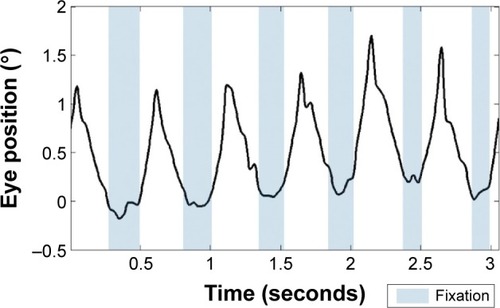Figures & data
Figure 1 Fixation recording in a patient with oculocutaneous albinism collected using a 30 Hz eye tracker.

Figure 2 Depiction of the brain, as viewed from above, showing normal cortical and subcortical projections during early human development.
Abbreviations: L, left eye monocular cells; LGN, lateral geniculate nucleus; R, right eye monocular cells; R+L, cortical binocular cells; SCC, splenium of the corpus callosum; V1, primary visual cortex.

